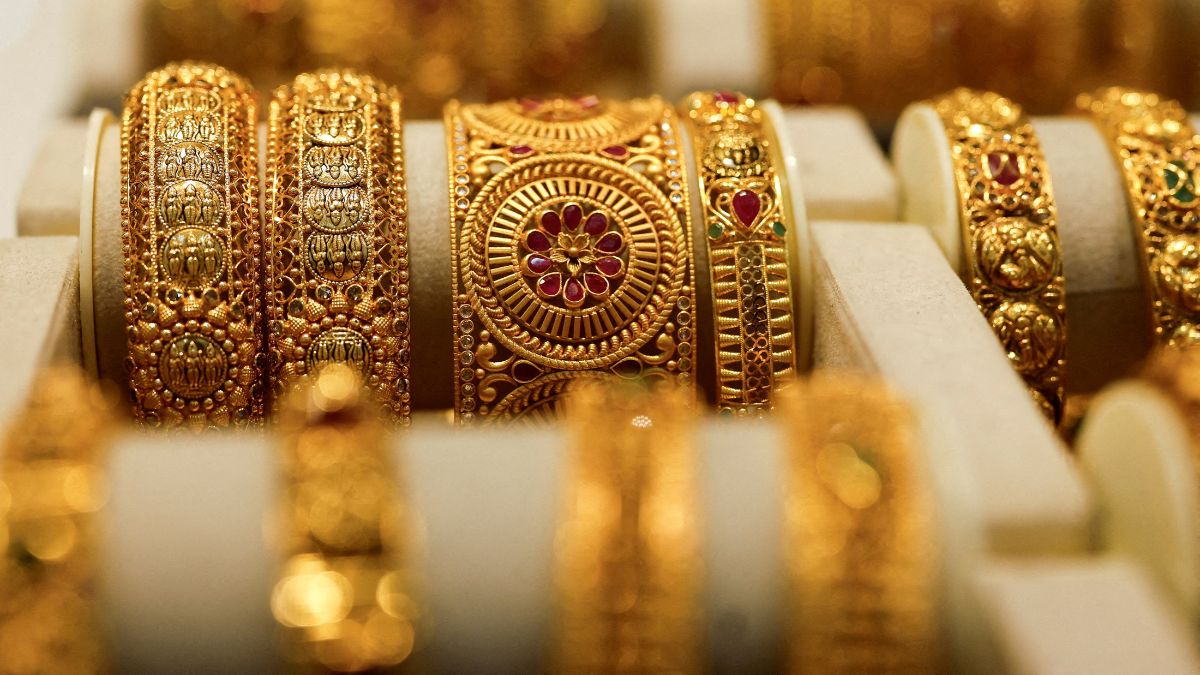Gold prices waver: Are you buying this Akshaya Tritiya?
 Gold bangles displayed at a jewellery store in Mumbai, India on March 20, 2025. (File) | REUTERS
Gold bangles displayed at a jewellery store in Mumbai, India on March 20, 2025. (File) | REUTERS
It’s Akshaya Tritiya today, the most auspicious day for buying gold. So first, here’s the good news: gold prices have dipped, as much as 400 rupees as of Wednesday noon. Of course, the bad news remains that gold prices are still at their highest, having gone up dramatically in recent times.
The big question, remains – on this auspicious day for buying gold, does it make sense to snap up the yellow metal, or will prices sober up in the coming weeks and months?
One look at the uncertain scenarios that abound in geopolitics around us would make us tilt towards the ‘buy’ button, because if tariffs and war continue their devastating dance in the coming days, gold will only get dearer. Because as everyone has by now accepted, gold standard by law or not, gold remains the standard, and the go-to whenever crises abound and the world craves for a safe haven asset. Not treasury bonds, not fixed deposits, not even land and definitely not crypto. Gold was, and still remains, the gold standard amidst the citizenry, and increasingly, the central banks, too.
In fact, suffice to say, whether you buy gold or not today on Akshaya Tritiya, chances are that, your country’s central bank might just be!
Surprised? Well, in the financial year that ended last month, India’s Reserve Bank snapped up more than 57 tonnes of gold for its reserves, which is already bursting at the seams at 880 tonnes of gold. FY25’s purchase has been the second-highest buying spree in RBI’s history.
It’s not just India alone. In fact, the world’s central banks getting more of a soft corner for gold could be traced back to Russia’s invasion of Ukraine three years ago and how the US and its allies went about freezing Russian assets abroad—including some 300 billion dollars of cash reserves Moscow had stored in US dollars.
This made many countries realise the dangers of holding their foreign exchange reserves in US dollars, which incidentally is a practice originally set in stone after the Second World War by the Bretton Woods agreement, and something that hasn’t changed, despite anyone from rival powers like the Russians or Chinese, or the oil cartels of the middle-east, making an attempt.
In fact, remember how recently Trump threatened BRICS nations, that includes India, when they even mulled the possibility of a new common currency to replace the dollar as the de facto standard recently? Right now, about 60 per cent of the global foreign exchange reserves are still in the US dollar.
The realisation that storing one’s cash reserves in the currency of another country could be a bad idea during a geopolitical crisis gained strength further later, with Trump coming to power in the US and riding roughshod over the way global diplomacy and trade is done. It strengthened many national central banks’ resolve to invest more in gold.
The result? Until the Ukraine invasion, central banks of the world put together used to buy on average about 400 tonnes of gold every year. Right after 2022, this ballooned up to 1,000 tonnes!
With gold production stagnant, and demand for it rising as fears of an uncertain global geopolitical scenario days to come unfold, everyone’s turning to the yellow metal for safety and security—countries, central banks and even the common man. Does it include you this Akshaya Tritiya?
Business